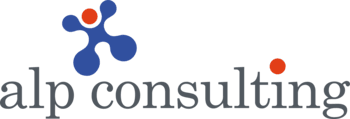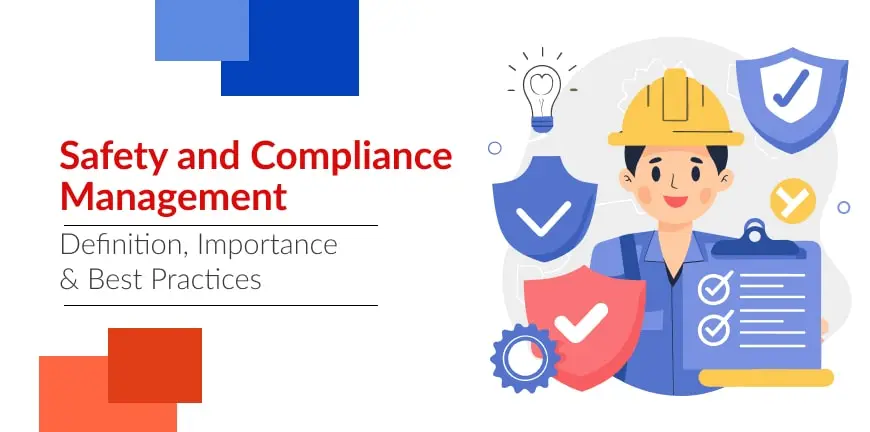
What is an Administrative Services Organization (ASO)? Definition, Pros & Cons
01/04/2025
Contract Staffing: Pre-COVID vs. Post-COVID
01/04/2025We often hear about workers dying from occupational accidents and work-related diseases, and some others suffering from accidents at the workplace that are non-fatal. This happens due to either not adhering to safety protocols properly or complete non-adherence to safety and compliance regulations. How do you stop these accidents from happening and keep people safe from occupational hazards? By ensuring that organizations have their compliance and safety management in place.
What is Compliance and Safety Management?
Compliance and Safety Management refers to ensuring organizations’ adherence to legal, regulatory, and internal company standards to protect employees from occupational hazards as well as protecting the work environment and keeping up the company’s reputation. It involves the implementation of the right policies, procedures to maintain and promote a safe working environment for workers.
What is Safety Compliance?
Safety Compliance is the ongoing responsibility and process of meeting standard rules and regulations that ensure the upkeep of occupational health and the safety of employees, reducing the risk of fatal and non-fatal occupational accidents within the workplace. The rules for the safety compliance are set by relevant government authorities and the organization based on specific industry practices.
Importance of Compliance and Safety in Organizations
The main aim of Safety Compliance management is to ensure that the workers are safe and are not prone to accidents. Apart from that, organizations must adhere to safety regulations to keep out of legal problems and issues. Failing to comply with health and safety regulations can result in injuries.
For example, if a construction worker is using faulty safety gear or is not following the proper instructions while using safety gear, it can lead to a major accident. For employers, this can lead to lawsuits, penalties, or higher payouts for injured employees. So, it is important to ensure safety compliance. The importance of workplace safety and compliance are-
1. Higher employee morale and productivity
Workers feel safe and valued in a compliant environment. This results in better morale and increased productivity.
2. Lower risk of compensating workers for injuries
Safety compliance and risk management ensure fewer health and safety compliance-related compensation claims by workers.
3. Reduced healthcare costs
If a worker is injured at the workplace or is suffering from a work-related illness, these costs are to be borne by the employer. compliance and safety management can avoid these costs.
4. Avoid penalties
Claims can be challenging and expensive. Penalties imposed followed by successful claims can be even more expensive. To avoid this, safety compliance adherence is a must.
5. Enhanced brand reputation
Having the right compliance and safety management in place makes you an employer of choice. Your track record for taking care of the safety of your workplace highlights your brand image.
Recognition of the importance of proactive compliance tactics is an asset to any business – especially in highly regulated industries such as renewable energy, aviation, and construction.
What are the Best Practices for Improving Safety Compliance?
Below are some of the best practices for improving safety compliance-
1. Effective Training Programs
Provide training on safety protocols regularly. Your training modules must address the hazards and safety procedures to be followed by employees relevant to their roles. Hands-on training sessions can help with the reinforcement of theoretical knowledge and practical experience. Update your programs with the changing safety standards and practices.
2. Create clear, concise policies
Having the right policies in place is the first step towards ensuring safety in the workplace. However, for them to work, it is important that these policies are understandable and accessible to all employees, including those working onsite, offshore. It would help if the people who have made the policy enhance their commitment to adhering to them. The policies must be communicated through channels like email, meetings, and newsletters to keep everyone informed.
3. Conduct regular audits
Audits help in identifying the loopholes, trends, opportunities for improvement, and the effectiveness of the policies and procedures in an organization. Both external and internal audits must be scheduled periodically to gain a comprehensive assessment. An audit checklist will help cover all aspects of safety and compliance.
4. Proper protocols to be implemented
Detailed safety protocols must be in place to help employees follow them in different situations, ensuring adherence to safety standards. Step-by-step instructions for all tasks should emphasize proper procedures and potential hazards, supported by checklists and visual aids to facilitate correct and consistent execution.
5. Proper documentation
Keep your auditing paper trails organized so that sharing compliance documentation and reporting safety becomes a digitalized, automated process, eliminating days of paperwork.
What are the Challenges in Compliance and Safety Management?
There are various challenges to overcome to ensure compliance and safety management in an organization. Some of the most common challenges faced by organizations are-
1. Inadequate training
Organizations often forget to focus on training the employees or educating them on occupational hazards that are specific to their area of work. This could be about the protocols they must follow while performing their work or the proper use of safety gear.
2. Poor Maintenance
Often, the safety equipment and machinery provided to workers are not well-maintained. For example, scaffolding is often found to be unstable, and protective gear is either worn out or is not properly taken care of.
3. Communication issues
Many times, employers fail to communicate safety measures to employees. Also, there are no clear channels for reporting safety concerns. Even if an employee wants to report or talk about certain safety issues, they do not know who to go to.
4. Insufficient risk assessments
Most companies fail to conduct risk assessments regularly. Even when they do, at times, they fail to cover all potential areas prone to hazards. The inadequate assessment can lead to serious issues like higher risk of injured employees, substantial payouts, and downfall of brand reputation.
5. Unpreparedness during emergencies
While you may have emergency procedures in place, it is also important to ensure they are not outdated. This can lead to employees being unfamiliar with evacuation routes or procedures, as drills are infrequent or skipped altogether.
Not addressing these challenges on time can lead to incidents of accidents and injuries, legal penalties, decreased employee morale, and potential long-term legal and financial repercussions for the company.
Are You Looking for Reliable Safety Compliance Solutions?
In today’s highly regulated work environment, ensuring safety compliance is not just a necessity but is critical for your business’s success. Reliable safety compliance management solutions can help mitigate risks, maintain adherence to relevant rules and regulations, and foster a culture of safety within your organization.
If you are looking for reliable safety compliance solutions, Alp Consulting can help. By partnering with us, you can streamline compliance processes, reduce liabilities, and focus on growing your business with confidence. Choosing to partner with us will ensure the right compliance solutions today and secure a safer, more efficient future for your workforce.
Frequently Asked Questions (FAQs)
1. What is the purpose of safety compliance in the workplace?
The main purpose of workplace safety compliance is to prevent workplace injuries, reduce stress, improve overall productivity, make employees or workers more aware of the workplace and tools, and enhance brand reputation.
2. How does safety compliance impact business operations?
Safety compliance impacts business operations by preventing workplace injuries and illnesses. It also helps improve compliance with laws and regulations and reduces costs, including significant reductions in workers’ compensation premiums.
3. What are some examples of safety compliance?
Some of the common examples of safety compliance include regular and thorough risk assessments, adequate training provided to employees regarding safety protocols for performing tasks safely, provision of necessary equipment and safety gear to employees, being prepared during emergencies with well-equipped first aid kits and drills, meetings for safety audits, and reporting of hazards.
4. How can technology improve safety compliance management?
Technology can improve safety compliance management by enabling real-time monitoring, automated processes, data-driven insights, and improved training and communication, leading to a safer and more compliant workplace.
5. What is the difference between safety compliance and risk management?
Safety Compliance involves the compliance team’s role to make sure the company avoids legal/regulatory violations and financial penalties. Risk management involves proactive measures to assess, monitor, and manage risks, often employing strategies such as risk identification, risk assessment, risk mitigation, and risk monitoring.
6. How often should safety compliance audits be conducted?
Safety compliance audits must be conducted quarterly or bi-annually in organizations. However, more frequent audits may be necessary in high-risk industries or workplaces with dynamic operations.
7. What is the safety and compliance manager’s job description?
The job description of a safety and compliance manager is as follows: Conducts safety meetings, audits, and inspections to ensure compliance, evaluate performance, identify corrective action, and implement follow-up assessments. Plans, implements, and conducts preventative care, safety, and compliance training programs.




